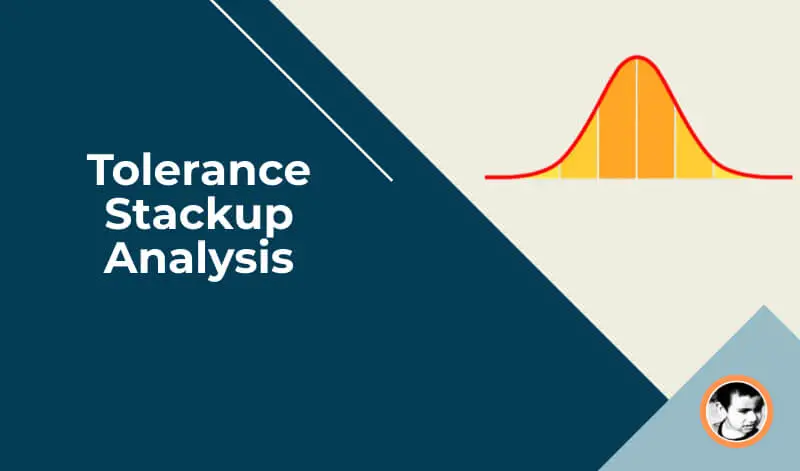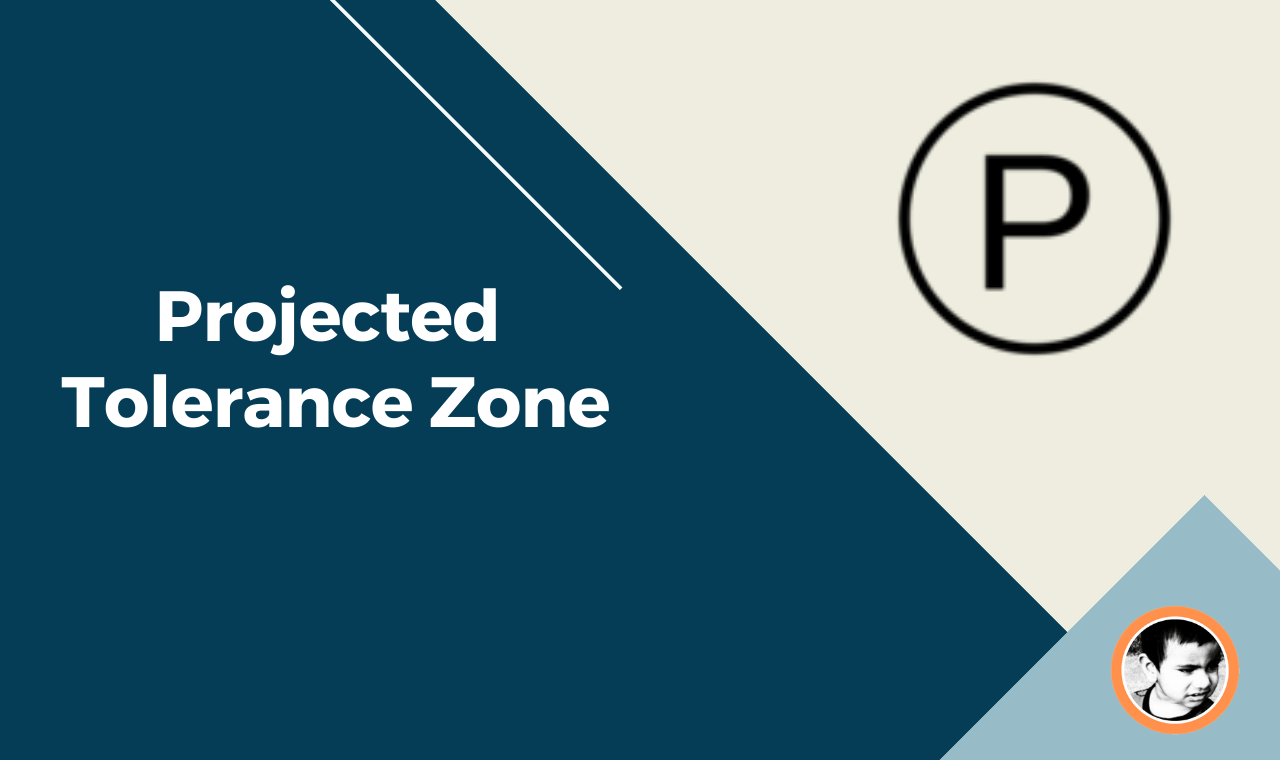Profile tolerance in GD & T is the amount of deviation a surface or a line is allowed to have. When used with a datum, profile tolerance can control form, size, orientation, and even position. Let’s learn more about Profile tolerance, the definition, type of profile tolerances with uses and examples in this article.
What is profile tolerance?
Profile tolerance is the amount of deviation of a profile of a line or a surface. No surface can be made absolutely perfect. Due to machine or measurement variations, engineers should allow a deviation in the line elements or surfaces called profile tolerance.
Please make a note that, Profile tolerance can be used with or without a datum.
Types Of Profile Tolerance
There are two types of profile tolerances.
- Profile of a line
- Profile of a surface
Profile Of A Line
The profile of a line is the amount of deviation a curve can have. It is the allowable variation in the curvature of a curve. The profile of a line is the 2D version of profile tolerance.
When you mention profile tolerance of a line, what that means is that every cross-section of that surface should have the same amount of deviation of the curvature of the curve.
![What Is Profile Tolerance? Definition, Types, Uses, And Examples [PDF] 1 profile tolerance](https://www.riansclub.com/wp-content/uploads/2020/09/profile-tolerance.jpg)
![What Is Profile Tolerance? Definition, Types, Uses, And Examples [PDF] 2 profile tolerance](https://www.riansclub.com/wp-content/uploads/2020/09/profile-tolerance1-2.jpg)
The profile of a line is closely related to Straightness and circularity. The reason being, all these three types of tolerance defines how much deviation is allowed in a profile.
If it is a straight line, Straightness tolerance is specified. If the profile is circular, circular tolerance is allowed. If the profile is neither a straight line nor a circle, a profile tolerance of the line is used.
Profile Of A Surface
The profile of a surface is the 3D version of the profile tolerance. Unlike the profile of a line that controls the curve, the profile of a surface controls the complete surface.
When measured at any point on the surface, all points on that measured surface should be in between the surface tolerance zone mentioned .
![What Is Profile Tolerance? Definition, Types, Uses, And Examples [PDF] 3 profile tolerance](https://www.riansclub.com/wp-content/uploads/2020/09/profile-tolerance2.jpg)
![What Is Profile Tolerance? Definition, Types, Uses, And Examples [PDF] 4 profile tolerance](https://www.riansclub.com/wp-content/uploads/2020/09/profile-tolerance3.jpg)
Types Of Profile Of A Surface Tolerance
The types of profile of a surface can be categorized based on the direction of variation and applicability of surfaces,
These are types of profile of a surface tolerance based on the direction of profile tolerance
- Unilateral Profile Tolerance
- Bilateral Profile Tolerance
Bilateral Profile tolerance can be further categorized as below
- The bilateral equal profile tolerance
- The bilateral unequal profile tolerance
These are the types of profile of a surface tolerance based on applicability of surfaces.
- Profile tolerance on a surface
- Profile tolerance in between two points of a surface
- Profile tolerance all around
- Profile tolerance all over
Unilateral Profile Tolerance
When the tolerance zone of a profile is in one direction, it is called Unilateral profile tolerance. See the below example where the profile tolerance is only in one direction. It can also be in the opposite direction, but it can not be in both directions.
![What Is Profile Tolerance? Definition, Types, Uses, And Examples [PDF] 5 profile tolerance](https://www.riansclub.com/wp-content/uploads/2020/09/profile-tolerance-1.jpg)
![What Is Profile Tolerance? Definition, Types, Uses, And Examples [PDF] 6 profile tolerance](https://www.riansclub.com/wp-content/uploads/2020/09/profile-tolerance1-3.jpg)
![What Is Profile Tolerance? Definition, Types, Uses, And Examples [PDF] 7 profile tolerance](https://www.riansclub.com/wp-content/uploads/2020/09/profile-tolerance2-1.jpg)
![What Is Profile Tolerance? Definition, Types, Uses, And Examples [PDF] 8 profile tolerance](https://www.riansclub.com/wp-content/uploads/2020/09/profile-tolerance3-1.jpg)
Bilateral Profile Tolerance
When the tolerance zone of a profile is spread across both sides of the true profile, it is called bilateral profile tolerance. In the feature control frame, we need to use a ” U ” modifier symbol which shows how much deviation is allowable outside of the true profile. The “ U “ symbol is only required when there is unequal bilateral tolerance.
Bilateral equal profile tolerance
When the profile tolerance zone is equally distributed on the both sides, then it is called bilateral equal profile tolerance.
![What Is Profile Tolerance? Definition, Types, Uses, And Examples [PDF] 3 profile tolerance](https://www.riansclub.com/wp-content/uploads/2020/09/profile-tolerance2.jpg)
![What Is Profile Tolerance? Definition, Types, Uses, And Examples [PDF] 4 profile tolerance](https://www.riansclub.com/wp-content/uploads/2020/09/profile-tolerance3.jpg)
Bilateral unequal profile tolerance
When the profile tolerance is unequally distributed on both sides, it is called bilateral unequal profile tolerance. In the below picture, what the profile tolerance means is that the total profile tolerance is .003. Out of that, .002 is on the outside of the true profile. Whatever is showing after the ” U” modifier is the offset of the outside surface.
![What Is Profile Tolerance? Definition, Types, Uses, And Examples [PDF] 11 profile tolerance](https://www.riansclub.com/wp-content/uploads/2020/09/profile-tolerance4.jpg)
![What Is Profile Tolerance? Definition, Types, Uses, And Examples [PDF] 12 profile tolerance](https://www.riansclub.com/wp-content/uploads/2020/09/profile-tolerance5-1.jpg)
Profile tolerance on a surface
This is how a profile tolerance on a surface is shown in the drawing. In the below example, only one surface will have the profile tolerance until it reaches a point where there is no tangency.
![What Is Profile Tolerance? Definition, Types, Uses, And Examples [PDF] 3 profile tolerance](https://www.riansclub.com/wp-content/uploads/2020/09/profile-tolerance2.jpg)
![What Is Profile Tolerance? Definition, Types, Uses, And Examples [PDF] 4 profile tolerance](https://www.riansclub.com/wp-content/uploads/2020/09/profile-tolerance3.jpg)
Profile Tolerance in between two points on a surface
If the profile tolerance is not applicable on the whole surface, but only on the surface between two points, then this is how it is shown on the drawing.
![What Is Profile Tolerance? Definition, Types, Uses, And Examples [PDF] 15 profile tolerance](https://www.riansclub.com/wp-content/uploads/2020/09/profile-tolerance6.jpg)
![What Is Profile Tolerance? Definition, Types, Uses, And Examples [PDF] 16 profile tolerance](https://www.riansclub.com/wp-content/uploads/2020/09/profile-tolerance7.jpg)
Profile tolerance all around
if the profile tolerance is all around the connecting surfaces then this is how it is shown on the drawing. The surfaces do not necessarily need to meet the tangency.
![What Is Profile Tolerance? Definition, Types, Uses, And Examples [PDF] 17 profile tolerance](https://www.riansclub.com/wp-content/uploads/2020/09/profile-tolerance8.jpg)
![What Is Profile Tolerance? Definition, Types, Uses, And Examples [PDF] 18 profile tolerance](https://www.riansclub.com/wp-content/uploads/2020/09/profile-tolerance9.jpg)
Profile Tolerance all over
When the profile tolerance is applicable on all surfaces of the part then is called profile tolerance all over. Below is the notation for that. So in the below image, all surfaces of the part will have .002 profile tolerance.
![What Is Profile Tolerance? Definition, Types, Uses, And Examples [PDF] 19 profile toleance](https://www.riansclub.com/wp-content/uploads/2020/09/profile-tolerance10.jpg)
Profile tolerance and datum
Profile tolerance can be used with a datum or without a datum. When used without a datum, it just controls the shape of the line or surface.
When profile tolerance is used with datums, it can control the form, size, orientation and position of the surface.
![What Is Profile Tolerance? Definition, Types, Uses, And Examples [PDF] 20 profile tolerance](https://www.riansclub.com/wp-content/uploads/2020/09/profile-tolerance11.jpg)
What is a profile tolerance zone
The virtual envelope that gets created by the profile tolerances is called the profile tolerance zone. In the below example, the envelope formed by the blue surfaces is called the profile tolerance zone.
![What Is Profile Tolerance? Definition, Types, Uses, And Examples [PDF] 18 profile tolerance](https://www.riansclub.com/wp-content/uploads/2020/09/profile-tolerance9.jpg)
Every point of all true surfaces should be in between that tolerance zone. In the case of a line, every point of that line should be in between that tolerance zone.
How to measure profile tolerances
If it’s a very simple surface, then a height gauge can be used to measure profile tolerance. But if the surface is complex, then CMM ( Coordinate measuring machines) is used. The CMM can scan the data points and match them with what is shown in the drawing.
Nowadays, all designs are made in CAD software. So CMM data points are compared with the CAD data to check any deviations. There is a software called PolyWorks which is very good to do this kind of task.
You may also like to Read:
What is bonus tolerance and how to calculate bonus tolerance
What are GD & Rules
What is a datum in GD & T
What is the datum target and why it is useful
Conclusion: GD&T profile tolerance
Profile tolerance is beneficial in industries like automobiles and aerospace as these industries use complex shape parts. But that does not mean that only these two industry uses profile tolerance. Now a day profile tolerance is used in almost every industry.
Please note that profile tolerance increases part cost as suppliers need special machines like CMM to measure profile tolerance. Unless it is essential, we should refrain from using profile tolerance.
When profile tolerance is used, no other dimensions are shown for that profile, became if there are datums, you may use basic dimensions.
I hope I could able to give enough ideas on profile tolerance. If you still have questions, please write in the comment section, and I will be happy to help.
Frequently Asked Questions ( FAQ)
What Is a Profile Tolerance
Profile tolerance specifies a uniform boundary and the true profile within which the elements of the surface must lie.
How to measure profile tolerance?
Simple profile tolerance can be measured using height gauge. Complex profile uses CMM to measure
What does letters a, b and c means in a profile tolerance?
Those letters are datum names. When profile tolerance is used with datum’s, it controls form, shape, orientation, and position.



